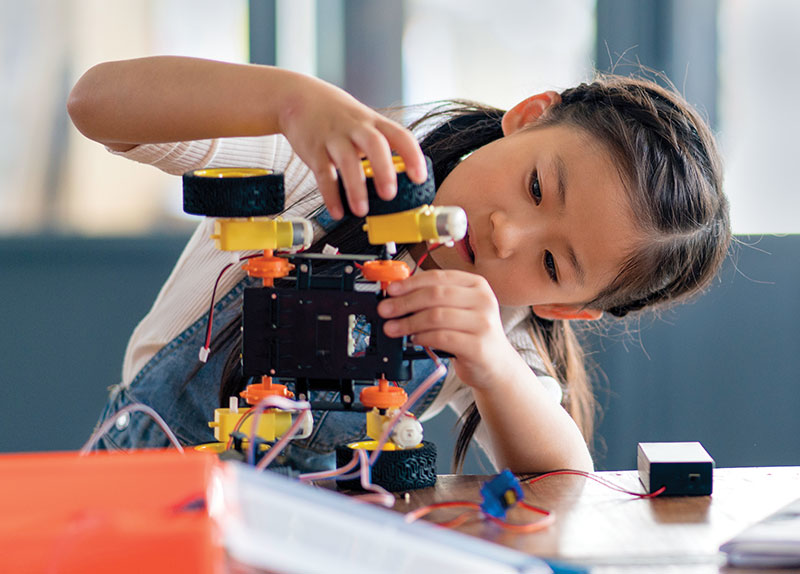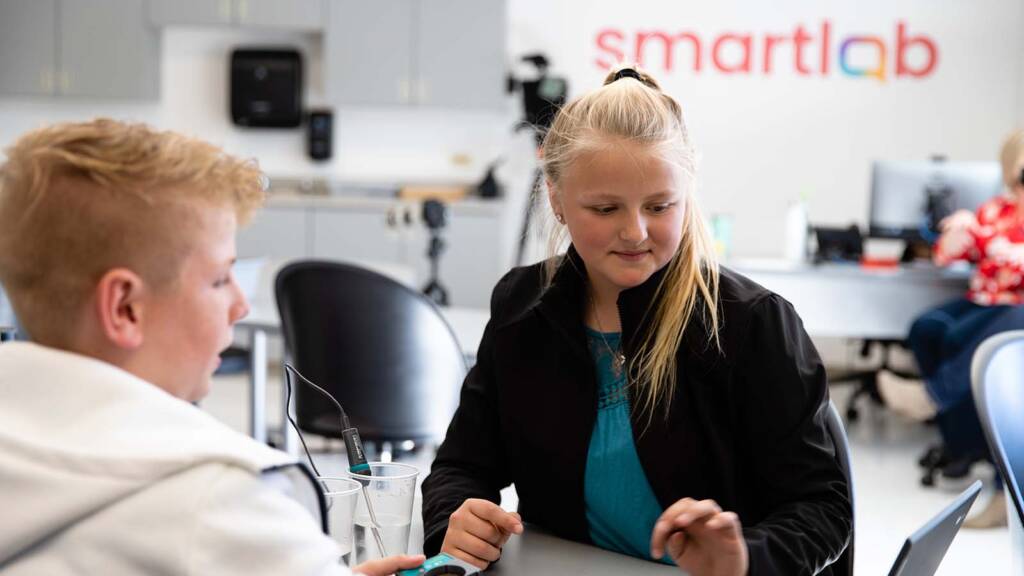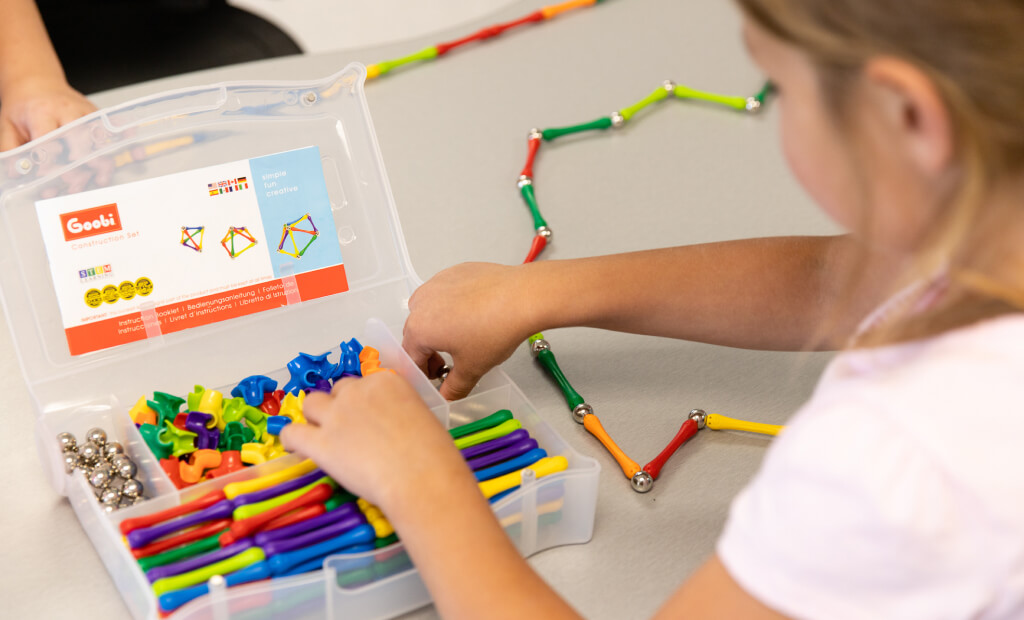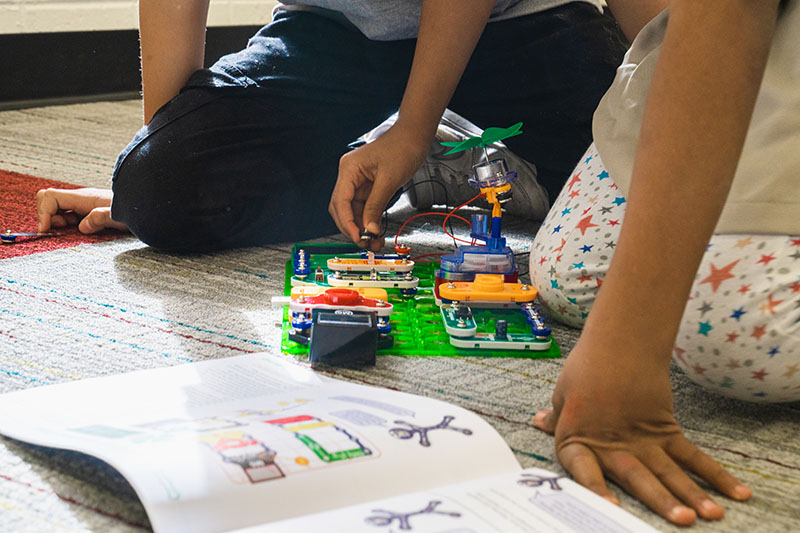10 Project Based Learning (PBL) Examples
If you’ve spent any amount of time in a K–12 classroom, you’ve likely heard about project-based learning (PBL).
It’s more than just an education buzzword or catch-all for hands-on projects—if implemented properly, PBL can help young learners retain more knowledge, grow their understanding of the world around them, and even identify career possibilities for the future. This form of learning is an excellent way to engage students in their own education and prepare them for success in the real world. Perhaps most importantly, project-based learning can help students develop 21st century skills they’ll carry with them their entire lives, such as critical thinking, problem solving, and collaboration.
PBL can be used in any subject area and is adaptable to any grade level. It is an especially effective way to engage learners of differing abilities, including English language learners and students with special needs.
In this blog post, you’ll find 10 examples of PBL engagements you can try in your own K–12 classroom. You’ll be amazed at how PBL can transform your content!
Explore project-based learning principles for elementary schools >>
Overview of Project-based Learning
Project-based learning is a mode of instruction that gives learners the opportunity to apply theoretical knowledge to real-world problems in the classroom. In PBL, classrooms are organized so that students work together on real-world tasks or problems. By inviting students to engage in hands-on learning activities, they acquire and solidify knowledge in a way that directly applies to their lives.
PBL is appropriate for students from preschool through grade 12 and beyond. It comprises activities like classroom debates, community service activities, field trips, language immersion programs, and much more. There is no set time for PBL engagements; some last less than one class period, while others, such as long-term research projects, can take over a year or more to complete.
To be considered a PBL engagement, an activity must incorporate most or all of the following seven criteria:
- An open-ended question, challenge, or problem
- An inquiry-based process that stimulates curiosity and generates questions
- The acquisition of new knowledge and skills that build upon prior knowledge
- The use of higher-level skills such as critical thinking, communication, collaboration, and creativity
- The promotion of student voice and choice
- Opportunities for instructor or peer feedback and revision
- A public presentation of the problem, research processes, methods, and results
PBL is used frequently in STEM or STEAM instruction, since so much of our everyday lives is influenced by the pillars of science, technology, engineering, the arts, and math. For many students, a “learning by doing” approach can make a potentially intimidating or challenging subject much more manageable and “real.”
Among other benefits, PBL encourages critical thinking, connects a student’s education to the real world, supports long-term knowledge retention, and helps build lifelong curiosity and a love for learning.
It is important to remember that PBL is not a one-size-fits-all approach — activities such as the ones in this article should be adapted to meet the needs of your students and the curriculum.
10 Real World Examples of Project-Based Learning in the Classroom
The following 10 examples of project-based learning can be adapted to any classroom, for any grade level, and to fit specific curriculum and individual student needs.
As you examine these examples, notice where you see evidence of the criteria for high-quality PBL.
1. Create Your Own Website
Project Challenge: Design a solution to a problem. Create a website to advertise your solution with clear reasons and relevant evidence to influence buyers.
Using a website builder platform such as Wix or Squarespace, have students create their own website for a product or service of their choosing. Exercising both research and computer skills, students will research their topic, draft the content, design the layout, and test their site for usability. The design process should incorporate testing and critiquing their classmates’ websites, providing constructive feedback to improve the user experience.
Use the purpose for the website to integrate the targeted learning outcomes into this project. Remember, high-quality project-based learning requires learners to learn and apply new skills and knowledge in order to complete the project.
Targeted Learning Outcomes:
- CCSS.ELA-LITERACY.W.8.1. Write arguments to support claims with clear reasons and relevant evidence.
2. PSA Video Project
Project Challenge: Create a PSA about a change you’d like to see here at school. Support your opinion by surveying stakeholders (classmates, teachers, parents, staff) and creating visual representations with pictures or bar graphs.
Have your students work in teams to create videos in the style of a public service announcement. Ask them to choose an issue they feel strongly about and craft an informative or persuasive argument that might air during primetime television commercial breaks, before YouTube videos, or as a targeted ad on social media. Each group would be responsible for researching their topic, writing the script, and filming the video, with each step being broken into discrete tasks based on individual students’ interests and abilities.
This project naturally lends itself to English Language Arts, but project-based learning innately creates so much opportunity for cross curricular connections.
Targeted Learning Outcomes:
- CCSS.ELA-LITERACY.W.3.1. Write opinion pieces on topics or texts, supporting a point of view with reasons.
- CCSS.MATH.CONTENT.3.MD.B.3. Draw a scaled picture graph and a scaled bar graph to represent a data set with several categories. Solve one- and two-step “how many more” and “how many less” problems using information presented in scaled bar graphs.
3. Take Action on Current Events
Project Challenge: How might a price increase on avocados impact certain communities’ access to fresh produce?
Use a current event and a question like the example above to inspire research, learn about different cultures or history, etc. and then do something about it—even if it’s as simple as writing a letter to the CEO of Whole Foods or WalMart explaining your proposed solution.
Teach students the importance of objective reporting and presenting all of the facts without taking a personal stance; provide examples of award-winning journalism students can use as a reference. Ask them to consider not only the factual elements of the story, but also their larger implications. What might the public at large need to know about this event to make them concerned?
Students can use their research to write an article, create a presentation, or even film a video in the style of a breaking news report. Research projects like this are an excellent way for students to learn about a complex topic, especially one that is directly relevant to their world.
Targeted Learning Outcomes:
- CCSS.ELA-LITERACY.RI.9-10.8. Delineate and evaluate the argument and specific claims in a text, assessing whether the reasoning is valid and the evidence is relevant and sufficient; identify false statements and fallacious reasoning.
Education isn’t about just filling your head with facts. It’s about taking knowledge and doing something novel with it. So once the students have that experience [in the SmartLab], they start to see that what they’re learning about is bigger than just a fact or concept. Learning is no longer a job; it becomes this adventure.
— Brian Beierle,
SmartLab Facilitator
Prairie View Elementary School, East Troy, WI
4. Model Bridge Engineering & Construction
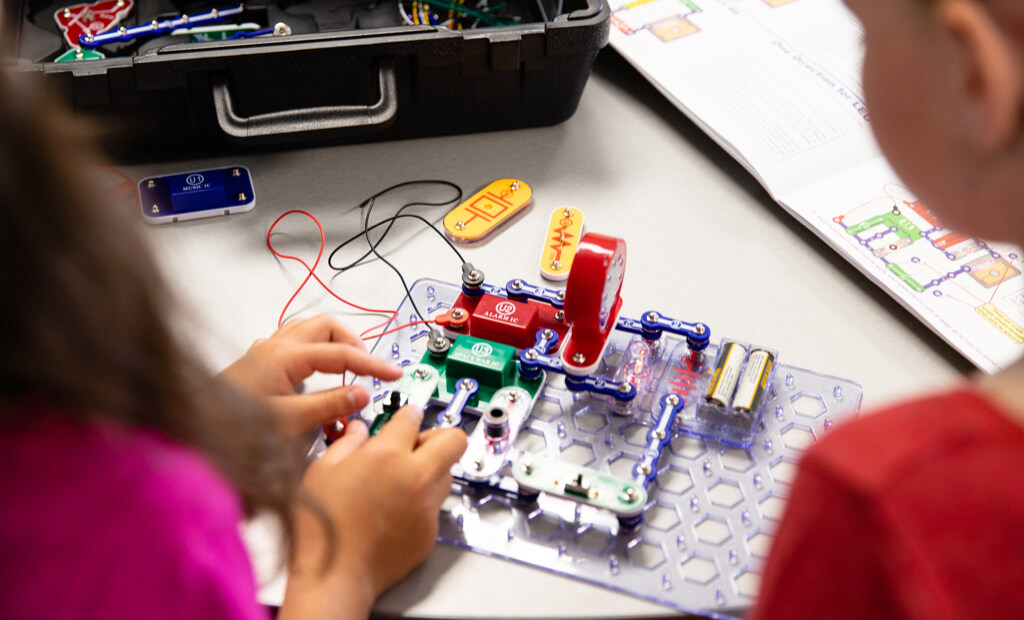
Project Challenge: Use physics principles to design and build a safe, durable structure.
STEM projects are an excellent way to engage students in science, technology, engineering, and math. In this type of project, students learn and apply physics concepts and mathematical skills to design, build, and test a model bridge.
Students can work either individually or in small groups. They will need to research different types of bridges, consider the materials they will use, and test their bridge to see if it can hold weight. Once they present their findings to the class, students can test their bridges against others’ to determine what combination of materials and design results in the highest structural integrity. This type of project encourages students to think critically and apply their knowledge to real-world situations.
The SmartLab HQ is helping us develop students who are critical thinkers, communicators, and collaborators. We hope this type of project-based learning will empower our students to make meaningful contributions to the world and be true trailblazers.
— Dr. Tracy Bonday,
Head of School
Ursuline Academy, New Orleans, LA
5. Create a Community Mural
Project Challenge: Facilitate a public art project by focusing on the logistical requirements, such as permitting, materials, and stakeholder input.
Public art breathes new life into the most unassuming places! In this type of project, students will brainstorm as a group to identify a viable space for a new wall mural, whether on school property or somewhere in the community. They will work together to secure the necessary permissions, create a budget, source materials, conceptualize, design, plan, and paint the art.
Arts projects are not only an excellent way for students to exercise their creativity, but planning the logistical side of public art installation helps students build and exercise project management skills, taking into account the input of multiple stakeholders.
Creating a budget and planning a mural requires lots of math thinking! Kindergarteners can measure the dimensions of the wall using nonstandard units of measurement, while middle schoolers can use equations to balance their budget with the size of the mural and material choices.
In the SmartLab, students are engaged in hands-on, problem-based learning. It’s not only different, it’s fun!
— Jenny Ledin,
SmartLab Facilitator
Prairie View Elementary, East Troy, WI
6. Food Bank Awareness & Volunteering
Project Challenge: How can we use our research skills to spread awareness of a local food bank and increase their donations?
Incorporate a visit to the food bank to interview staff, collect information for marketing materials, and interview community members who utilize it and want others to know about its value. Students can then use this research to create and disseminate calls for donations and volunteers, as well as advertise the service to communities who may not be aware of it.
The service component of this project may take place during school, after school hours, or even on the weekend, but students can use time in class to research issues related to food insecurity in their community and even conceptualize sustainable solutions. Projects like these can help students integrate with the local community, allow them to connect their learning to real-word problems, and develop empathy and compassion for others.
The skills that are developed in the SmartLab HQs create good citizens and good humans. It builds on foundational skills and creates the ideal attitudes you want to see in the classroom.
— Hallinan Elementary School,
Lake Oswego, OR
7. Produce Your Own Podcast
Project Challenge: How can you convey a compelling story or message using only an audio medium?
Creating and producing a podcast is a great example of a topical technology project. Students can research their own topic, develop the script, record, and then publish the podcast on a hosting platform such as Podbean or Soundcloud. Each individual or group can connect their podcast to an existing curriculum unit or subject, or come up with a topic or genre of their choosing, focusing instead on learning and applying critical research and communication skills.
8. Field Trip with a Purpose
Project Challenge: Solve an environmental issue in your backyard.
Plan a field trip to study the effects of human activity on the natural environment. For example, if your school is near a coastal area with heavy trash buildup that impacts waterways and marine life, take a trip to the affected area to record observations, collect samples, and take measurements.
Students can also enlist the help and expertise of local environmental conservation experts, interviewing them and gaining a more robust understanding of the problem and possible solutions. Students use this information to 3D print solutions to mitigate this problem. Conservation experts return to hear the presentations of these potential solutions and provide feedback on their viability.
The Elementary SmartLab HQs have been game-changers by allowing our district to fully integrate and align STEAM programming for our K–12 students. The unique methods of engaging students in meaningful, inquiry-based learning experiences are quickly helping our learners develop a stronger STEAM identity, and they now see themselves and their futures differently. They believe they can change the future!
— Clint Allison,
Executive Director of Student Achievement
Fountain-Fort Carson School District 8, Fountain, CO
9. Mock Trial
Project Challenge: How can you build a case that holds up in a court of law?
Mock trials are an excellent way for students to engage their critical thinking, problem-solving, and persuasive argument skills. In this type of project, students act as lawyers and witnesses in a simulated court case, learning about the legal system and how it works along the way.
Each student will take on a specific courtroom role, such as the judge, defense attorney, prosecution, and jury. Once the facts of the crime have been established, they will prepare their cases and simulate a real trial.
Use the “court case” to integrate language arts and history. Bring students into the past by centering your mock trial around a historical event with impacted populations being represented by the defendants and plaintiffs.
10. Shark Tank Pitch
Project Challenge: Craft a compelling business plan that will make investors want to fund your company.
The popular television reality show “Shark Tank” provides a window into the high-stakes reality of business startups. Using the show as a template, students will embark on their own mock startup ventures, including conducting market research, testing products, and working to convince investors to help fund their business. This project requires that students use their skills of research, persuasion, public speaking, budgeting, and collaboration.
You can even see if your local SCORE chapter is willing to send representatives to coach students on pitching their business ventures. SCORE is a nonprofit network that provides free mentoring to small businesses across the U.S.
How to implement project-based learning in high school classrooms >>
Project-Based Learning Lesson Plans
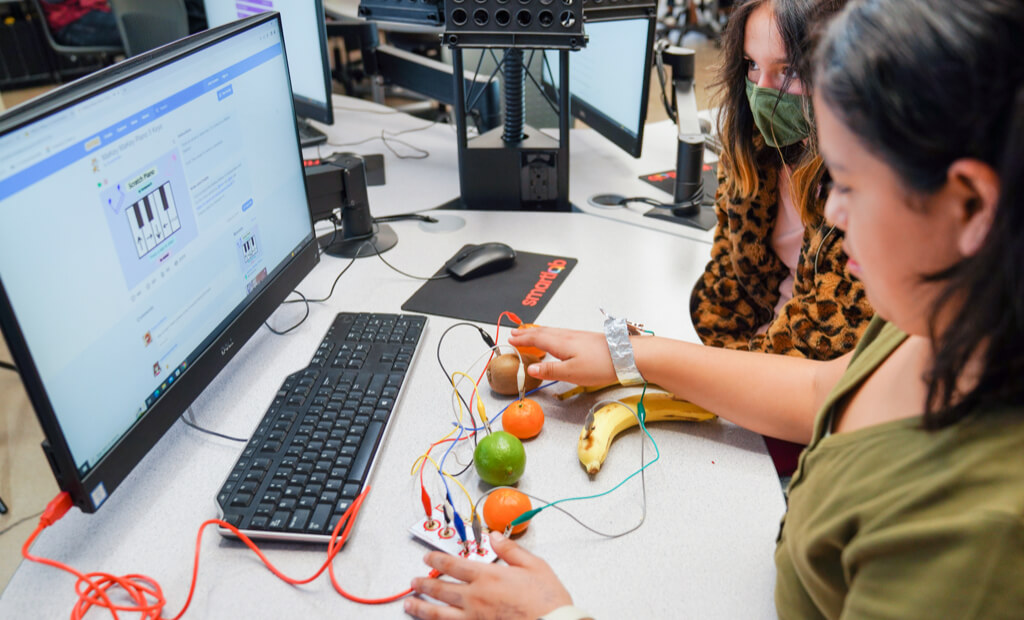
Project-based learning is not a lesson in itself; rather, it’s a series of lessons that build upon multiple skills. The length of each PBL unit can vary, lasting from several weeks to multiple years—there is no formal rule governing how long you need to spend on a PBL engagement!
Above all, remember that a PBL unit should be more hands-on and interactive than traditional instruction, and should focus on problem solving and real-world applications (as opposed to rote memorization). In terms of the instructional method, PBL tends to be more student centered by design, while a traditional lesson may be more teacher centered.
When planning cross-curricular units, start with the seven criteria of a PBL engagement—or better yet, use these criteria as a checklist! Use the following steps as a guide:
- Identify the learning outcomes or standards you want to achieve or meet. This should happen before any actual lesson planning begins.
- Brainstorm lesson ideas by thinking about authentic problems that are relevant to individual students, their school, community, the state, the country, or the world.
- The project-based lessons you design should require students to learn targeted content or skills, and to apply those skills in developing a solution or completing the project. Start with content in one subject area, then look for cross-curricular connections to cover even more subject areas.
- Now you can begin to plan your unit. Break it down into project steps and think about where instruction or learning will take place in the sequence. It can be helpful to anchor the project steps to some kind of established process, such as the scientific method.
- Determine your students’ roles in completing the project. Will they work independently or in groups? Will each student be responsible for completing a discrete part of a class-wide project, or will each be expected to execute their own project from start to finish?
- How will you and your students know when the project is complete? What will signify success? Make sure your students understand the objective, including what skills they are expected to build during the engagement.
- Decide how you will assess the project. Your grading rubric should account for all the steps taken along the way, from students’ planning process, to their project execution, to the final product.
Creating effective PBL unit plans is not without its challenges—but you don’t have to do it alone! SmartLab helps schools and educators design and implement engaging PBL STEAM learning environments that link to core academic content and foster the development of important academic and life skills. The hands-on, authentic activities allow students to construct their own meaning and explore topics in greater depth.
Time to Get Started
Now that you’ve got some compelling ideas in mind, it’s time to start building your own PBL units. By following the tips in this article, you can create a successful project-based learning lesson plan covering a variety of topics to support your students in developing their skills. Don’t be afraid to get creative! Think about real-world problems and scenarios that your students might be faced with outside the classroom.
Reach out to fellow educators in your school or district to see how they align their PBL units to academic standards or required skills-building. Other teachers are excellent sounding boards for workshopping project ideas, learning what works in the classroom and what doesn’t, and finding resources that can help you achieve your PBL plans.
SmartLab Learning understands that no two students learn the same way. Our team helps schools implement standards-aligned, individualized learning solutions—created by teachers, for teachers—that meet the unique needs of every learner through a variety of hands-on, engaging activities. Our open-ended projects provide multiple challenge levels and allow students to shape and expand learning around their own interest, abilities, and learning styles. There are so many possibilities…with SmartLab Learning, the sky’s the limit!


